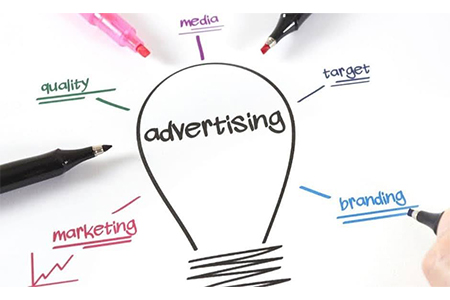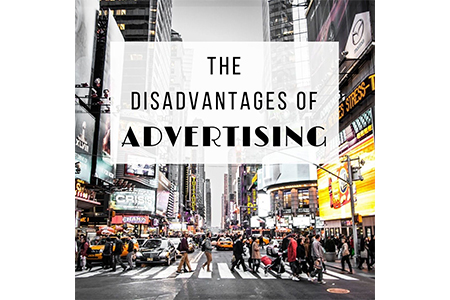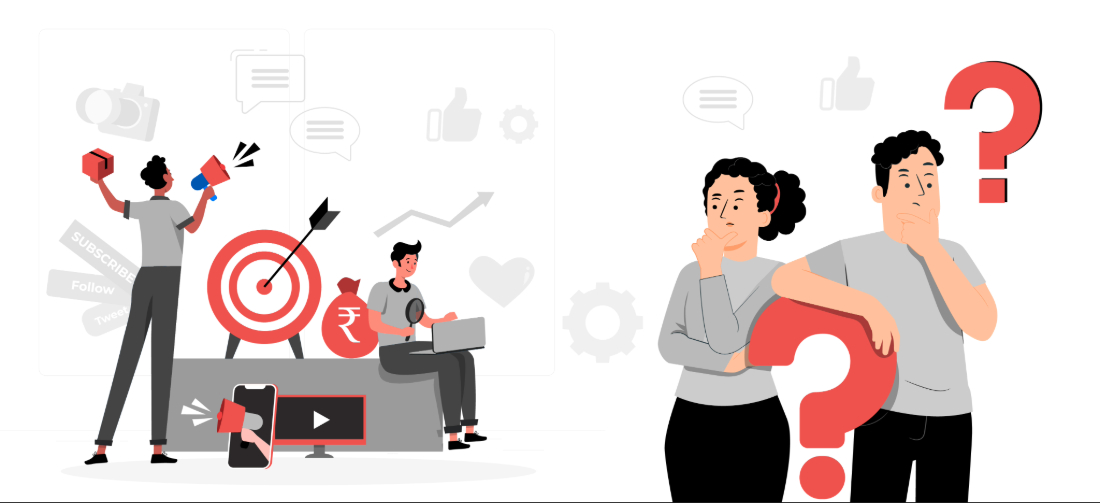Advantages of Advertising
1. Drives Market Expansion
Advertising is one of the prime movers of market growth since it enables companies to penetrate new geographic and demographic areas. Through advertising specifically, companies can bring products to new customers and create demand in fresh markets. This not only fuels business expansion but also stimulates economic activity. Effective advertising closes the gap between what the businesses offer and what the consumers need, providing wider access beyond borders and tastes to eventually create new markets and eventual sustainability.
2. Boosts Sales and Business Revenue
One of the greatest assets of advertising is its direct control over business revenue and sales. By getting consumers' attention and conveying value clearly, advertising motivates buying. A successful campaign can turn product awareness into customer acquisition, generate repeat business, and enhance profitability. Employed strategically, advertising sends a strong message that encourages prospects to become repeat customers, a highly profitable asset for revenue creation in both competitive and expanding markets.
3. Enhances Brand Visibility and Recognition
Advertising generates brand awareness by repeated exposure of a brand in the mind of a target audience on many mediums. The exposure time and again generates brand awareness, which triggers customers to recall a product or company immediately and believe them promptly. By persistence and innovation, advertising generates brand awareness that differentiates a brand from others in competitive markets. Finally, familiarity generates emotional bonds with customers, the precursor of long-term brand loyalty and top-of-mind awareness at purchase points.
4. Provides a Competitive Edge
Advertising in the present times enjoys a distinct competitive advantage in the hectic marketplace through appealing to a brand's unique selling proposition. It enables businesses to announce their strengths and what sets them apart to consumers, positioning them ahead of the competition. Invention, cost, quality, or service, if it's a benefit, advertising ensures that the benefit is seen and remembered. It doesn't just sell the product, it enhances brand image, influences buying behavior, and often decides who leads the pack and who lags in the competition game.
5. Educates and Empowers Consumers
Other than selling, advertising is a significant teaching tool, it instructs consumers about product characteristics, use, benefits, and accessibility that allow them to make discerning buying choices. Advertising brings awareness about novel innovations or better alternatives, hence heightening the consumers' knowledge and faith. Such openness brings about confidence and allows for responsible consumption, particularly when campaigns optimize facts over puff. Informed customers are more likely to become loyal recommenders, and this makes education through advertisement not only socially valuable but also commercially sensible.
6. Supports Social Awareness and Public Welfare
Advertising is not just a business necessity, but a force for social welfare and public good. From public health initiatives to conservation of the environment, well-designed ads can shape behavior towards a positive direction. Through the power of appeal to emotion and mass coverage, for that matter, advertising is a strong tool to induce change and shared responsibility. Brands utilizing advertising as a means to promote causes of significance are likely to become more credible and more consumer-respected, ultimately proving that purpose and profit need not be mutually exclusive.
7. Encourages Innovation in Marketing
Marketing innovation will be fueled by the imperative to differentiate in advertising. Brands repeatedly test novel formats, channels, and creative concepts in order to be noticed and get engaged. Not only does this drive for innovation drive product promotion, but product development. Interactive storytelling, influencer advertising, and augmented reality are only a few of the many examples of how advertising is meeting the challenge of staying up with innovation. With the constantly changing landscape, the desire to be remembered drives creativity and sets the tempo for an industry.

Disadvantages of Advertising
1. Uncertain Return on Investment (ROI)
Though heavily used, advertising is not always a quantifiable return on investment. Campaigns may fail for reasons of targeting, incompatibility of message, or change in the market and thus go unbudgeted. The issue is measuring performance effectively and linking advertisements to actual sales or conversion. Without effective analytics and a tactical strategy, firms might not be able to defend their expenditure. For most, uncertainty about advertising ROI is still a major limitation and risk driver.
2. High Costs Can Burden Small Businesses
While advertising can pay high dividends, the cost of running successful campaigns usually disadvantages small companies. From production to buying media, costs can add up fast. Up against bigger brands with greater resources is a significant obstacle, particularly in high-profile platforms. This money barrier may restrict visibility and crush growth in startups and neighborhood companies, making them less likely to achieve momentum in aggressive environments controlled by larger competitors.
3. Risk of Misleading or Deceptive Messaging
Advertising marketing is a fine line between persuasion and deception. When companies exaggerate or omit important information, consumers are misled, breaking credibility and confidence. False advertising may include legal action and long-term reputation damage. Most consumers are aware of marketing tactics, but constant exposure to lying message repetition can fog perception and create false hopes and expectations. Honest advertising is based on honesty and transparency, without them, companies can lose more than customer loyalty.
4. Encourages Overconsumption and Materialism
Advertising usually evokes a feeling of urgency or insufficiency in order to stimulate sales, and such a move may encourage overconsumption and a materialistic lifestyle. By continuously promoting the belief that happiness is derived from material possessions, advertisements can steer consumers into purchasing more than they require. This behavior not only puts a strain on individual finances but also adds to environmental degradation as well as social disequilibrium. Effective as it is for sales, such communication raises ethical concerns regarding sustainability and responsible consumption.
5. May Create Market Monopolies
Major players tend to use enormous advertising budgets to justify their market stronghold, and it becomes challenging for the others to compete. All this concentrated visibility has the potential to create monopolies through constant bombardment of a consumer's psyche. Competition can be harmed, innovation might get stifled, and artificially kept prices can weaken the market. While healthy competition should be fostered by advertising, unfettered domination through punitive advertising expenditure can restrict diversity and damage market equity in the long run.
6. Cultural Insensitivity and Stereotyping
In the attention-grabbing race, a few ads get trapped into depicting cultural stereotypes or insensitive visuals. Apart from these isolated consumers, they uphold negative biases and fallacies. Cultural insensitivity in advertising provokes backlash and kills a brand name worldwide. As brands are speaking to people from various groups, it is necessary that the messages be respectful and inclusive. Dismissing this function has the potential to make an impactful communications vehicle into that for controversy.
7. Privacy Concerns and Ad Intrusiveness
Today's advertising, particularly online, is founded on tracking and behavior targeting data, raising very real privacy concerns. Shoppers more and more feel their personal space invaded by ads stalking them from device to device and from platform to platform. Intrusive formats like pop-up windows or auto-play videos contribute to annoyance even more. Loss of privacy can result in a lack of trust and diminished brand interaction. Advertisers have to balance personalization and respect for personal boundaries to stay effective.

Conclusion
Advertising is a powerful driver of business success and social influence. It can fuel markets, educate audiences, and build meaningful relationships between brands and consumers. However, unchecked advertising can lead to misinformation, social issues, or ethical concerns. Responsible, honest, and strategic use of advertising ensures it benefits both brands and society.
Frequently Asked Questions (FAQs)
Advertising functions as a tool that enables brands to expand their market reach by developing awareness and interest while creating demand in uncharted consumer segments.
Thoughtfully designed advertising strategies influence purchasing choices, which bring additional customers to acquire products, thus producing greater sales and increased revenue for the business.
Market competitors employ advertising strategies to present their unique selling features while establishing brand faithfulness and developing market recognition, which differentiates them from the competition.
The delivery of important product details through advertising that uses improper methods results in customer misunderstandings, which harm brand reputation through dissatisfied consumers.
Big corporations maintain control of market visibility through their ability to invest heavily in advertising, which restricts small business opportunities for growth and reduces market competition.



